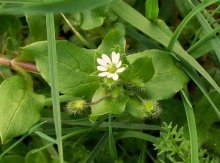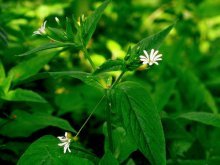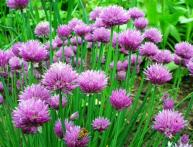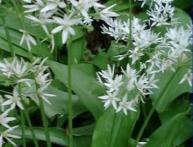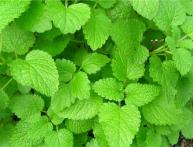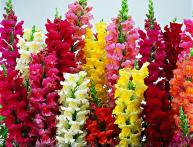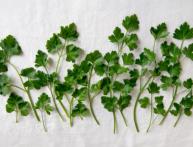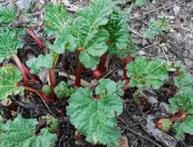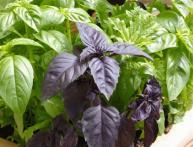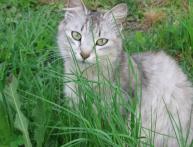Chickweed (woodlice)
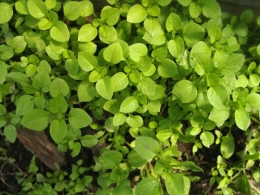
Nature has given us enormous wealth in the form of minerals, beautiful landscapes, animals, plants and other great values. Walking through the forest, we don’t even realize that under our feet there may be not just flowers, grass or shrubs, but very valuable means of protecting our own body from various dangerous diseases. One such medicine is the herb chickweed.
Content:
Description of chickweed
Chickweed is a flowering plant from the carnation family. It grows and develops over several years and is very rarely annual. Chickweed flowers are similar in appearance to chamomile. The petals are white. The fruit looks like a closed capsule of spherical or ovoid shape.
Main place of growth This plant has a cold and temperate climate. But other species of chickweed, due to their adaptability, were able to settle in all other climatic zones and can be found on any continent.
Chickweed as a separate species is a herbaceous weed plant, which is very difficult to get rid of due to the fact that it can reproduce up to fifteen thousand seeds on average, which can remain dormant for up to five years and manifest themselves during this period.But we should not forget that in addition to the negative qualities, chickweed also has a number of useful properties that are used in folk medicine.
In terms of life cycle, this plant only grows for one year. The appearance is presented as follows:
- Branching stem up to ten centimeters long
- Leaves are ovoid
- The flowers are star-shaped with white petals
- The fruits have the shape of an oblong capsule with seeds
- Flowering occurs from May to September
Our ancestors learned to predict the weather from this plant. If the flower did not rise, and its petals are bent towards the ground, then rain should be expected in the near future. This pattern is associated with a scientifically proven fact, which is that the plant reacts very sensitively to air humidity, which begins to increase sharply before precipitation begins.
Collection and preparation
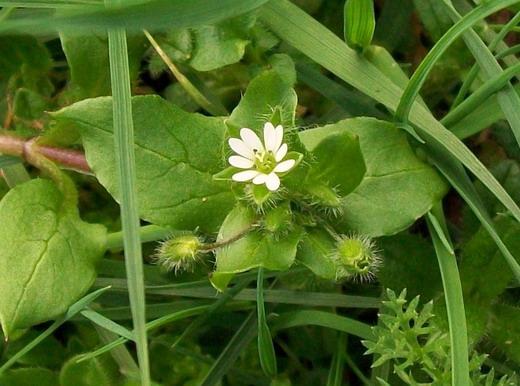
Due to its beneficial qualities, chickweed is actively used in folk medicine as a medicine. But in order to take advantage of the gifts of nature, they must be carefully collected. To prepare the main medicinal component, the upper green part of the plant is used, and collection is carried out only during the flowering period.
After harvesting the chickweed, the drying process occurs. The collected material must be placed in a ventilated place, protected from light and moisture. After drying, the grass is crushed and placed in a jar to prevent moisture from entering. The collection of the plant and its transformation into a medicinal component is determined by useful qualities plants and its components, which include:
- Vitamin C
- Vitamin E
- Vitamin K
- Carotene
- Magnesium
- Copper
- Iron
- Cobalt
- Triterpene saponins
- Tanning elements
- Alkaloids
- Flavonoids
- Lipids
- Essential oils
Vitamin C stimulates the body's protective barrier, increasing the concentration of red blood cells in the body. Metabolism improves and the oxidative process slows down (inhibits physical aging). Ensures uninterrupted functioning of the adrenal glands to produce appropriate hormones. Helps maintain natural cholesterol levels in the body and normal brain function.
Vitamin E is an integral element in the physical development of a child. Prevents cancer and strengthens the immune system. In addition, vitamin E has a rejuvenating effect, slowing down the aging process, and is also a tool for the prevention of coronary heart disease. It is used as a means of stimulating physical activity and normalizing the pregnancy process.
Vitamin K is an integral component in blood clotting, strengthens the walls of blood vessels and bone tissue. Participates in the formation of tissues of the heart muscle and lungs, as well as energy for the normal functioning of the entire body as a whole.
Carotene strengthens all elements of the cardiovascular system and prevents stroke. Another useful property is its immunostimulating effect in the fight against pathogenic microorganisms. Prevents cancer of the female genitourinary system and cleanses the body of harmful substances.
Magnesium has a calming effect and has a beneficial effect on the nervous system, relieving excessive irritability and agitation. Besides.Participates in DNA synthesis and tissue regeneration, allows the body to absorb vital vitamins B and C, and also ensures the proper development of bone tissue.
Copper ensures the synthesis of enzymes and proteins, takes part in the production of hemoglobin, red blood cells and leukocytes. Helps provide all tissues in the body with iron and other beneficial substances.
Iron, like any other extremely important trace element, plays an important role. It is an integral part in the formation of hemoglobin and the corresponding protein to maintain the process of oxygen supply to all cells in the body, participates in tissue growth and energy metabolism. In addition, iron is necessary for the normal transmission of nerve impulses and the formation of immune system cells.
Cobalt, despite its negative properties, plays no less a role than iron. It takes part in the production of red blood cells, has a sedative effect, and stimulates the development of bone tissue. In addition, cobalt is involved in the synthesis of DNA and RNA, normalizes the functioning of the pancreas, strengthens the immune system and prevents the appearance of malignant tumors.
Other substances (tannins, triterpenes, alkaloids, etc.) calm the nervous system, relax, and relieve inflammation.
Chickweed in folk medicine

The discoverer of chickweed as a medicine is S. Kneipp. He studied this plant and was able to introduce it into circulation using the following procedures:
- In the treatment of lungs as an emollient
- Relieving nausea and vomiting
- Treatment of hemorrhoids
- Treatment of inflammation and tumors of the kidneys and bladder
- Accelerate wound healing
When combined with chickweed, plantain and horsetail in one decoction, it helps relieve inflammation of the eyes and adjacent tissues, and helps improve vision. Residents of the northern and northwestern parts of Russia and Belarus use chickweed to treat hypovitaminosis, liver and kidney disease, stop bleeding and hemoptysis, and also as a laxative and diuretic for the formation of stones in the genitourinary system. When preparing concentrated decoctions, residents of the north relieve swelling of the limbs and reduce pain from a hernia. And this is not all the diseases that chickweed helps fight.
Remedies from chickweed
Chickweed is used for preparing medicinal decoctions and tinctures. For this, the dried upper green part of the plant is used. A small handful is diluted in boiling water in a volume of five hundred milliliters and infused for three days. After preparation, the tincture is taken orally in several small sips three times a day. At the same time, it is possible to relieve acute inflammation, normalize hormonal levels and all cyclic processes in the body.
For external use, the decoction is used in the form of a compress or lotion. First you need to moisten a small cloth and place it on the site of the skin lesion. Next, the moistened rag should be secured with a dry bandage, which will be separated by a plastic bag.
After applying the bandage, you can go to bed, and in the morning it should be removed to avoid further irritation. After a few days, a positive effect will be noticeable, and after a week, any damage to the skin will be removed.
Chickweed is not just a plant, it is a source of enormous medicinal power that must be used wisely and remember that natural remedies are much more effective than synthetic analogues. But don’t forget that before you start using it, you should consult with an experienced specialist who will help you avoid side effects and achieve the desired effect.
Video about using chickweed to make salad:
Interesting information about the vegetable garden

